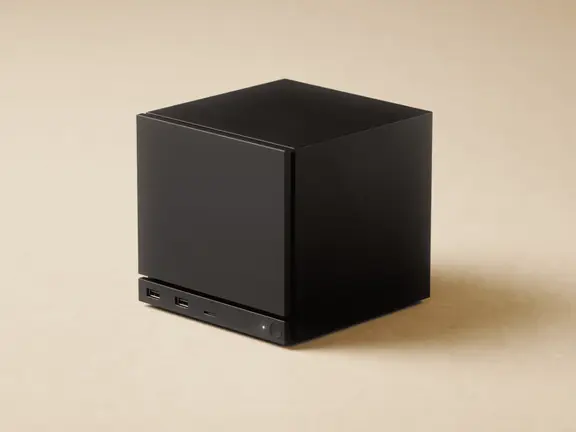
Published:
Readtime: 6 min
Every product is carefully selected by our editors and experts. If you buy from a link, we may earn a commission. Learn more. For more information on how we test products, click here.
After receiving a lot of positive feedback from my article on the costs of electric vehicle charging in Australia, I thought it would be a good time to talk about charging your electric vehicle at home. There were a lot of follow-up questions about the costs involved, but it’s such a technical question (varying costs of electricity) that I’ve decided to tackle it from a top-down perspective in multiple parts.
In this article, I’ll be looking at how you would charge an electric vehicle at home in an ideal world, with a budget that isn’t necessarily looking to pay itself off in the short term. I’ll also be looking at the best ways to charge your vehicle at home and explain what I’ve learned about vehicle-to-home (V2H) capabilities after speaking to expert and Country Manager of Delta Electronics, David Leal, at the Sydney Smart Energy Expo.
And while I won’t be able to give you a definitive figure on exactly what it costs to charge at home, you should be able to crunch the numbers yourself fairly comfortably once you’ve read this guide. I also hope to uncover some lesser-known facts about electric vehicle charging and ownership opportunities with V2H.

What is the Perfect Home Charging Solution?
The perfect EV charging solution at home combines solar panels, battery storage, an electric vehicle that offers vehicle-to-home (V2H) capabilities, and a suitable wall box for charging. In theory, you could charge the average EV from 20-80 per cent battery directly off the solar in around 8 hours, however, that would require full sun and your car to be parked in the garage for the duration of the charge. It’s not a practical solution and all but the most dedicated EV owners will go down this route. Thankfully, there’s a solution.
Instead, experts in the smart energy field suggest investing in battery storage, and on paper, it makes a whole lot of sense. Instead of charging your car during the day, you charge your battery, topping your car off when you get home. However, this idea falls flat when you look at the immense size of the batteries in modern EVs and the amount of energy it takes to charge them.
For example, the average EV will use 8-12 kWh in a commute from the leafy suburbs of Sydney into the CBD and back. However, even the largest Tesla Powerwall 2 only has a capacity of 13.5 kWh. This will top your car off every night, but it won’t leave any room for running your house. And this is why experts in the field suggest running your house off this built-up capacity while saving your cars charging for off-peak energy during the late hours of the night when it’s cheaper.
As it turns out, the ideal home charging solution is one that runs off the energy grid during the late hours of the night when it’s cheaper. If you’re wondering how much this will cost, consider that the average EV will use 8-12 kWh per day for an average commute.
With all that being said, once you understand how these battery solutions work, you can open a whole other can of worms with electric vehicles that support vehicle-to-home (V2H) charging.

Using Your Electric Vehicle to Power Your House
Vehicle-to-home (V2H) charging is something that we’ve only really seen in the USA with cars like the Ford F-150 Lightning. However, after spending time at the Smart Energy Expo in Sydney, it’s something that we need to talk about more often when it comes to electric vehicles.
I like to think about it this way. If the Ford F-150 Lightning with extended range has a battery capacity of 131 kWh, it’s almost 10 times the size of a Tesla Powerwall. Theoretically, it could power the average household in Sydney for more than three days. And when you consider the cost of installing a Tesla Powerwall 2 – around AUD$14,000 plus installation – it makes an electric vehicle look like a bargain in terms of the amount of lithium battery capacity you’re getting for your money.
Ford is quick to point this out in the press release for the Lightning, stating the “F-150 Lightning can also offer lower-cost energy storage in product customers already own – their truck.”

What’s Next for Charging and Energy Storage?
It’s not just the automotive manufacturers that we’re leaning on to develop these technologies. It’s brands such as Delta Electronics that are at the forefront of these V2G and V2H technologies right now. The brand’s new V2X charger is a bi-directional unit that provides bi-directional power conversion at a maximum of 11kW output and 95 per cent peak efficiency for charging/discharging EVs.
By combining it with a compatible EMS (Energy Management System), the charger can augment EVs by unlocking the full potential of energy routing and management, making vehicles useful not just for transportation, but also as an energy storage device that can then be drawn as an energy source, forming a virtual power plant.
Beyond this, by using your vehicle as a virtual power plant at home, you might want to charge your car back up at work during the day. To solve this, Delta Electronics has just released a 50kW DC Wallbox that’s slim enough to avoid car spot redesigns and is also fairly attractive in its appearance, because we know how tough some strata managers can be! More information can be found at the brand’s website linked below.
You’ll also like:
Aptera Motors’ Solar-Powered EV Never Needs to be Plugged In
We Put an EV to the Test on Australia’s Most Iconic Drive. Here’s What We Learned





























Comments
We love hearing from you. or to leave a comment.